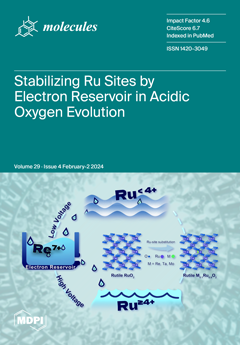Although nano SiO
2 exhibits excellent application potential in the field of oil and gas exploration and development, such as drilling fluid, enhanced oil/gas recovery, etc., it is prone to agglomeration and loses its effectiveness due to the action of cations in saline environments of oil and gas reservoirs. Therefore, it is crucial to study the mechanism of the change in energy between nano SiO
2 and cations for its industrial application. In this paper, the effect of cations (Na
+, K
+, Ca
2+, and Mg
2+) on the surface energy of nano SiO
2 particles is investigated from the perspective of molecular motion and electronic change by density functional theory. The results are as follows: Due to the electrostatic interactions, cations can migrate towards the surface of nano SiO
2 particles. During the migration process, monovalent cations are almost unaffected by water molecules, and they can be directly adsorbed on the surface by nano SiO
2 particles. However, when divalent cations migrate from a distance to the surface of nano SiO
2 particles, they can combine with water molecules to create an energy barrier, which can prevent them from moving forward. When divalent cations break through the energy barrier, the electronic kinetic energy between them and nano SiO
2 particles changes more strongly, and the electrons carried by them are more likely to break through the edge of the atomic nucleus and undergo charge exchange with nano SiO
2 particles. The change in interaction energy is more intense, which can further disrupt the configuration stability of nano SiO
2. The interaction energy between cations and nano SiO
2 particles mainly comes from electrostatic energy, followed by Van der Waals energy. From the degree of influence of four cations on nano SiO
2 particles, the order from small to large is as follows: K
+ < Na
+ < Mg
2+ < Ca
2+. The research results can provide a theoretical understanding of the interaction between nano SiO
2 particles and cations during the application of nano SiO
2 in the field of oil and gas exploration and development.
Full article






